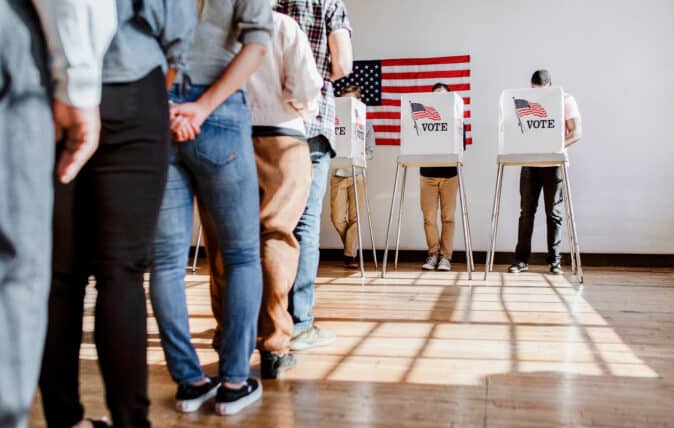Strategies for Human Resources and Security to Work as One to Enhance Workplace Safety
Human Resources specialist Melissa Muir joined the Women Who Protect podcast series to share strategies for HR and security to work together more effectively.

Oftentimes, a troubling incident can be a catalyst to spur necessary change. Melissa Muir, a Human Resources (HR) specialist dedicated to closing the gap between security and HR, realized this over a decade ago as she prepared for a seemingly risky employee termination. After recognizing the necessity for security’s involvement, she became interested in workplace security and started to strategize ways the security and HR functions could work together more closely.
While it’s common to find these teams working independently of one another with little to no collaboration, this isolation seriously hinders the efficiency and effectiveness of both siloed departments. By joining the Association of Threat Assessment Professionals (ATAP), Muir pursued further possibilities to learn how HR could contribute to solving security’s challenges. There she discovered the need for cross-functional collaboration when running a threat management program.
In a recent episode on the Women Who Protect podcast series, Muir shares the strategies she’s learned for human resources and security to work together more effectively.
In your words, what is threat assessment?
Security is a team sport, and I think threat assessment is where that really shows up. We use the term ‘multidisciplinary team,’ which means we’re all partnering together – whether it’s HR, legal, security, or behavioral health. All the parts we put together are really our strongest tool for prevention. When I’m telling somebody I just met what behavioral threat assessment is, I talk about it as a tool for preventing acts of targeted violence. People do not just snap. They don’t do things without often planning in advance and telling others beforehand. People often know.
In the workplace, there’s some great research that shows that more than one-third of the time coworkers have some insight into what’s happening with an employee that’s struggling and then later commits some harm. They share information, they tell coworkers, and they let people know. So if we can take that information and we can create spaces that are trusting and secure and share information in a professional and organized fashion, we can prevent a lot of the acts that we see. I think HR is a really important but often underutilized and underrepresented portion of those teams.
Can you explain what you mean by ‘security is a team sport’?
What I see is that we are working in silos a lot of times. When we sit down together, when we can incorporate safe practices in all of our professional worlds, then we are force multipliers for security.
For example, virtually 100% of HR has detected deception in the application process, yet more than half of HR doesn’t even verify degrees or do some basic checks. One in ten identifies a red flag in an application and still hires them. I like to say, “Don’t paint a red flag green.” Once I started working more closely with the formal security folks, some of the amazing things I learned about statement analysis, interview techniques, and what we can do with due diligence play right into our hiring practices. We’ve immediately made them more secure and better just from the partnership we have. We would worry a lot less about disgruntled former employees if we just didn’t hire them in the first place.
How do you nurture the partnership between security and HR so that both teams stay informed?
For me, the best tip I can give is to go in and start a conversation independent of a particular situation or a crisis and bring curiosity rather than judgment. Come in and find out what are the stressors of HR, what is happening in HR’s world and where you can partner. One example is at the court we had a lot of people that don’t know each other and a lot of people that have never been in the office. So, we did a variety of activities to encourage people to get to know each other. People letting in strangers in secure spaces dropped dramatically because we were getting to know each other. So when security came in and talked to HR about how we could do some connection games, security had some great ideas, and we saw an immediate impact on our security posture. It was because we were talking before we were letting someone go before I was feeling judged by security for not calling sooner and because somebody was listening to HR on how they could partner with us on our stressors.
We also did an online Jeopardy game where security had its own column, and we turned it into a fun game rather than just talking about policies that were irrelevant. Bring security in from day one so that employees know we take it seriously and that they have responsibility. Making security a part of our onboarding games sets the tone right away that we all work together to make everyone safer.
Why is boosting employee engagement a common goal for HR and security?
Employee engagement is a big deal in HR. It’s tied to retention, profitability, and lots of other important things and we use that metric very carefully. What we don’t talk about a lot is there’s an incredible connection between employee engagement and security. When my security friends shared that with me, I realized it was an incredible opportunity where something we both really care about dovetails. I started to wonder what we could do together with this because they helped me understand how something they care about feeds directly into my world. That is something that my security team brought to me that I never would have known was relevant if I hadn’t opened up a conversation with them.
What safety risks are you seeing from an HR perspective and a security perspective as people return to the office?
People are struggling right now. If you look at the statistics on what’s happening with teenage mental health and then remember that many of our employees are parents of those teenagers. From an HR standpoint, I’m very concerned about a couple of things. One is that there are so many crises happening and so much frustration around policies, one way or another. My biggest fear is that we are missing signs. Because the baseline is so off right now, we’re not sure what the baseline is for our employees, and we’re not sure what to measure. There’s so much volume of chatter and scary things happening in people’s lives – are we going to miss something that is really important? I think we’re seeing it at every level as people come back. That’s ramping up the pressure. Our managers and leaders of HR have been under constant strain, so they’re not always bringing their best selves either.
Any strategies for leaders that feel burnt out or impaired in their ability to fully lead?
I don’t think people understand how big of a deal this is. Those managers and frontline supervisors are there every single day, and they’re not getting support. They’re often the ones that are translating policies – that they weren’t a part of – that are being resented by people. They’re the ones fielding the toughest questions and having difficult goodbyes.
For me, at least in the short term, one of the things I do see that is helping is just creating as much space for them as possible and doing open forums. We used to have a pretty packed agenda in our management meetings. It was all about the latest changes to policies, but now we’re just creating open space to talk about what’s happening in everyone’s role. Sometimes just hearing what’s happening in other departments and what other people are struggling with and what successes have worked has been really valuable. So really supporting them in as many ways as we can because they need a break sometimes too.







